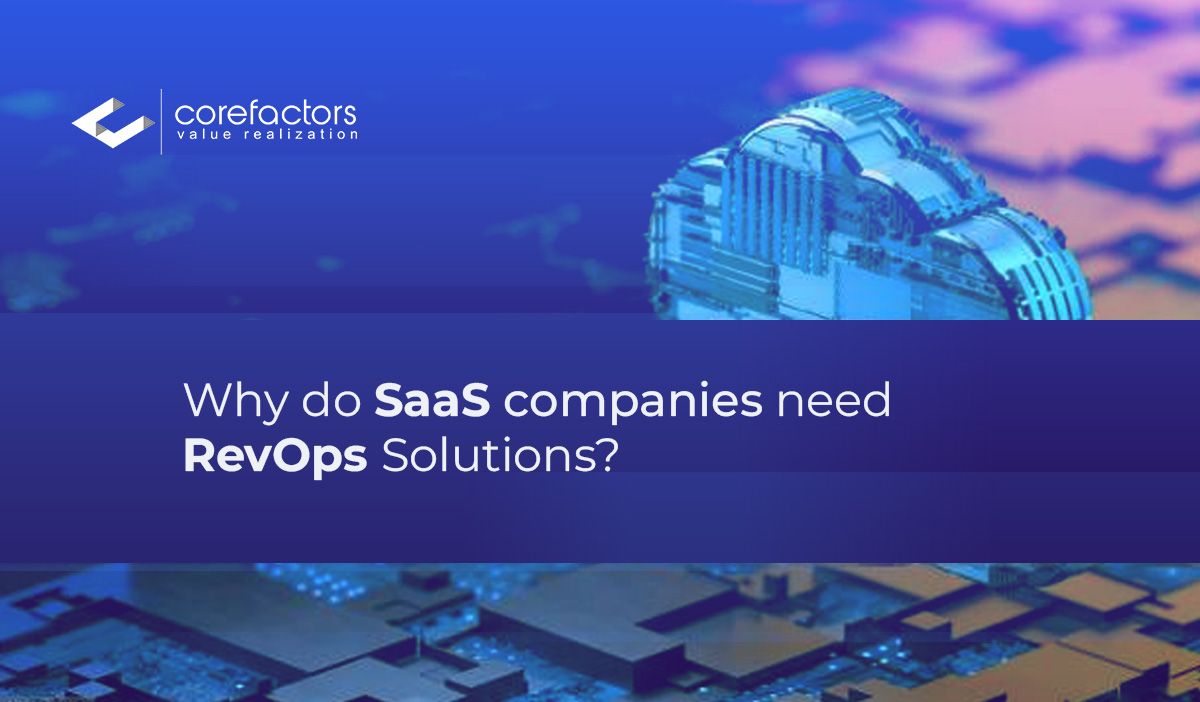SaaS companies heavily rely on organizational alignment for their success. However, data silos are a pestilence that many businesses struggle to eradicate.
Revenue Operations (RevOps) is a growing practice taken up by SaaS companies in the tech world to get rid of data silos and optimize their tech stack. But how exactly does it work? This blog discusses the negative effects of fragmented data and departments in a SaaS company and how RevOps solutions can help.
What is RevOps in SaaS?
Revenue Operations (RevOps) in SaaS refers to a strategic approach that aligns and optimizes sales, marketing, customer support, and success operations to drive revenue growth and enhance the overall customer experience.
At its core, RevOps aims to break down departmental silos and foster cross-functional collaboration by centralizing data, standardizing processes, and leveraging technology solutions within the SaaS organization.
RevOps solutions, such as a RevOps-enabling CRM, provide seamless data flow and communication across departments, providing a holistic view of the customer journey. SaaS companies can identify and capitalize on revenue opportunities more effectively, streamline sales processes, personalize marketing efforts, and deliver proactive customer support.
The Effect of Data Silos in SaaS Companies
Data silos arise when different departments or teams within a SaaS company store and manage their data separately, often using disparate systems or tools. This leads to several problems that are briefly outlined below.
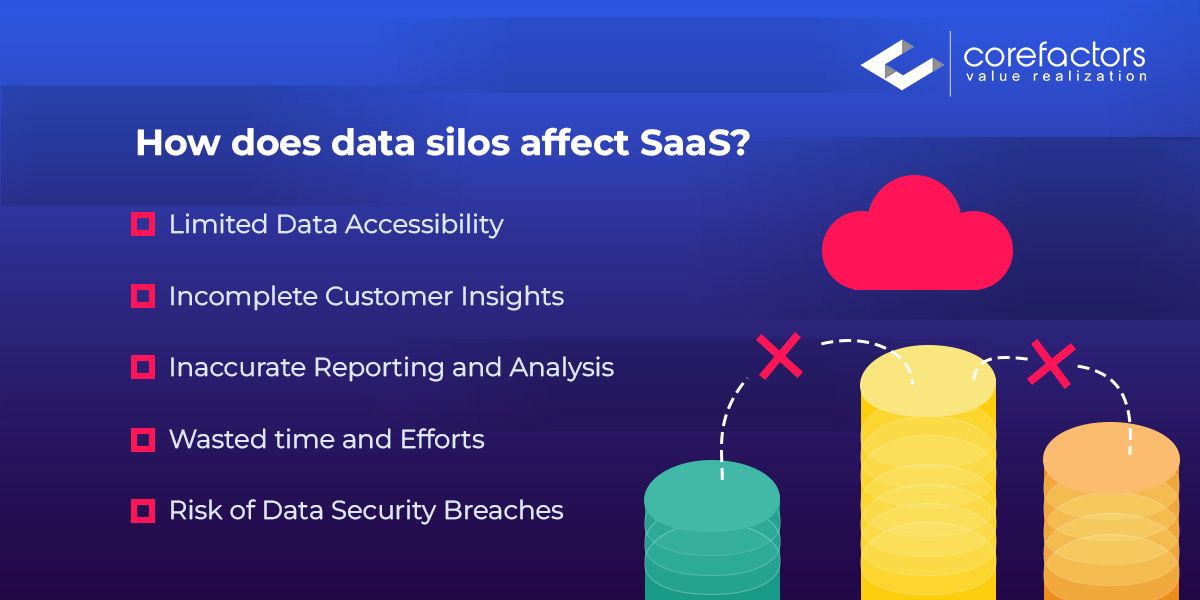
- Limited Data Accessibility: When different teams use different systems to store data, data accessibility and sharing becomes cumbersome and time-consuming.
- Incomplete Customer Insights: Customer interactions are fragmented across various systems, making gaining insights into the complete customer journey difficult. This lack of unified customer data holds back companies from personalizing marketing campaigns and tailoring their product offerings.
- Inaccurate Reporting and Analysis: Different departments may use conflicting data sources or definitions, resulting in discrepancies in key metrics and KPIs. This makes it difficult for decision-makers to trust the accuracy of the data and may lead to flawed strategic planning and resource allocation.
- Wasted time and Efforts: Sales and marketing teams may separately collect similar customer information, such as contact details or purchase history, leading to redundancy and inefficiency. This duplication of efforts not only wastes valuable time and resources but also increases the risk of errors and inconsistencies in the data.
- Risk of Data Security Breaches: When data is fragmented across multiple systems, it becomes more challenging to implement consistent security measures and access controls. This leaves the company vulnerable to unauthorized access, data leaks, and regulatory non-compliance, posing a significant threat to its reputation and legal standing.
These are reasons enough to break down the silos and establish a unified approach to data management and governance to unlock the full potential of data and drive success in the SaaS industry.
Let’s see how RevOps solutions can solve this problem and help SaaS companies.
Benefits of RevOps for SaaS companies
Teams pulling in different directions is the beginning of a SaaS company’s downfall. RevOps solutions do much more than align teams and get rid of data silos, some of which are mentioned in this list.
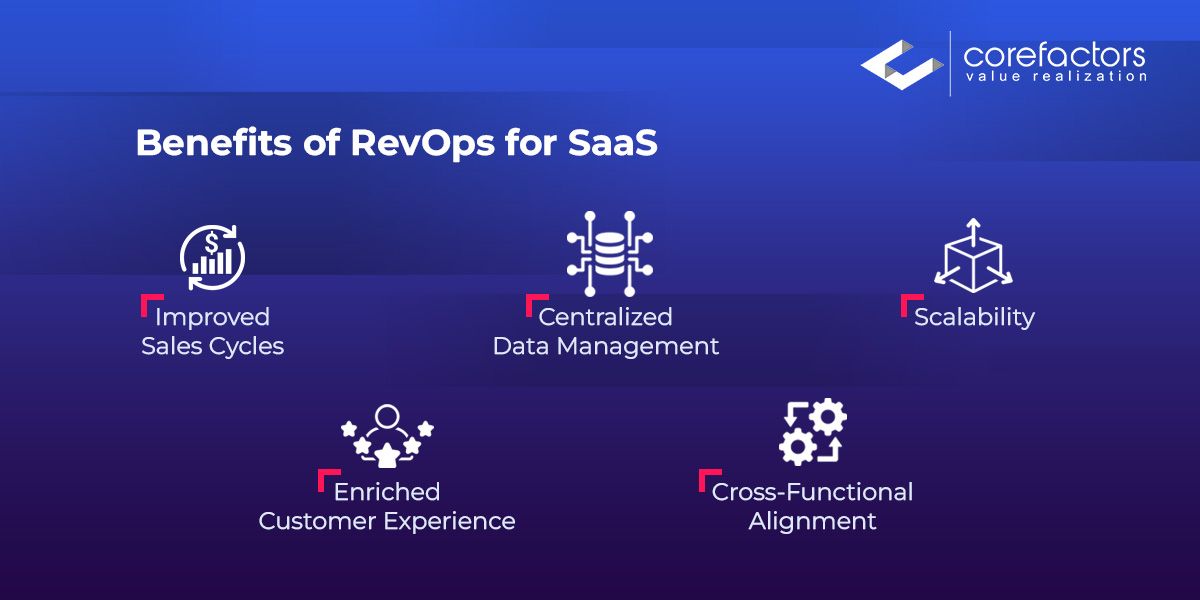
- Improved Sales Cycles
RevOps solutions streamline the sales process by providing sales reps access to comprehensive customer information. This makes prospect engagement more effective.
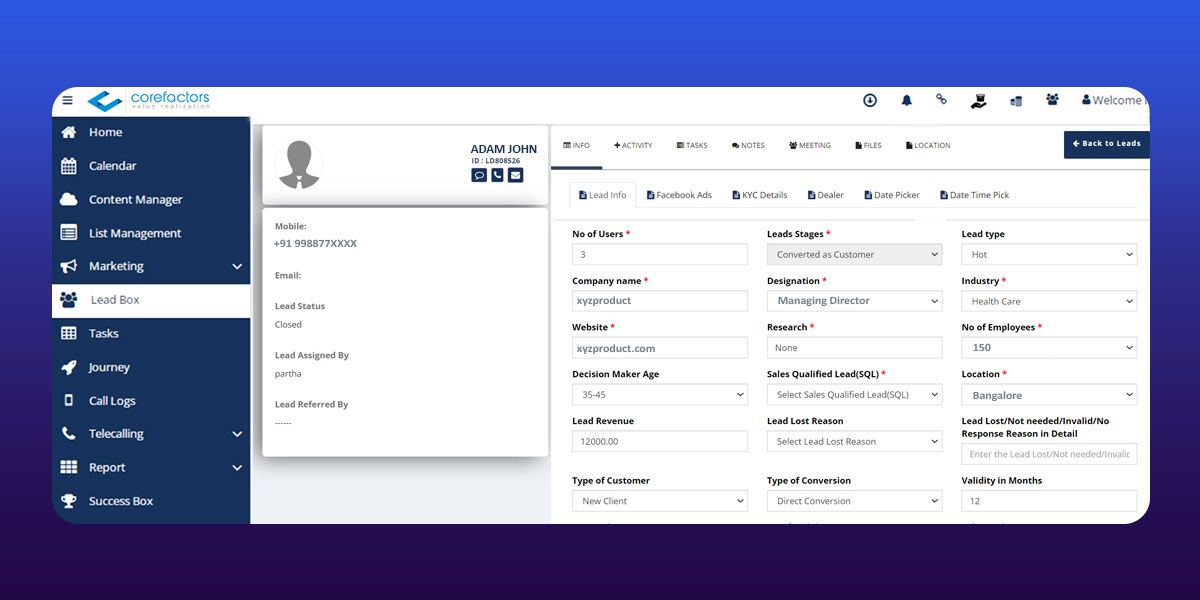
Implementation of standardized lead scoring and qualification processes facilitates better lead management. Sales teams can prioritize leads based on their likelihood to convert and focus their efforts on high-value opportunities. This ensures that reps are targeting the right prospects at the right time, increasing the efficiency of the sales cycle.
RevOps solutions automate routine tasks and workflows, reducing manual effort and accelerating the sales cycle. This includes the automation of
- Lead assignment
- Follow-up calls and emails
- Contract generation
- Subscription renewal
And many more such manual and repetitive tasks.
2. Centralized Data Management
By integrating data from various sources such as lead generation campaigns across social media platforms and websites, marketing campaigns, and customer support tools onto one platform such as Corefactors RevOps-enabling CRM, RevOps ensures that all teams have access to consistent and accurate data.
This eliminates the discrepancies and inconsistencies that arise from data silos, enabling more reliable reporting and analysis. A centralized platform ensures that everyone in the organization is using the same definitions and methodologies for measuring performance, reducing the risk of misunderstandings and misinterpretations.

Through predictive analysis and data visualization tools, RevOps solutions enable SaaS companies to implement advanced data analytics techniques.
3. Scalability
As SaaS companies scale, they often encounter challenges related to scaling their revenue growth. Among the many benefits of RevOps solutions are its structured frameworks and standardized processes that give way to scalability.
By implementing lead scoring models to identify and prioritize high-value leads, leveraging automation in sales and marketing, streamlining workflows, and standardizing processes to get the maximum productivity from available resources and more, RevOps solutions ensure that the company's growth keeps pace without sacrificing its effectiveness.
The scalability of SaaS companies also relies on fostering a culture of continuous improvement. This can be achieved by regularly reviewing and optimizing RevOps processes and performance metrics. Leaders should encourage feedback and collaboration among sales, marketing, and customer success teams to identify areas for improvement and implement best practices.
4. Enriched Customer Experience
A RevOps solution like a RevOps-enabling CRM provides a centralized repository for storing comprehensive customer data, including contact information, interaction history, purchase behavior, and support tickets. This comprehensive view allows SaaS companies to gain deeper insights into customer needs, preferences, and pain points, enabling them to deliver more personalized and relevant experiences.
With data alignment and better coordination among customer-facing teams, SaaS companies can ensure that customers receive consistent messaging and support across all touchpoints, leading to higher satisfaction and loyalty.
Marketing teams can create more targeted and personalized marketing campaigns. By leveraging customer data stored in the CRM, marketers can segment their audience based on demographics, behavior, or engagement level and tailor their messaging and offers accordingly.
With access to detailed customer profiles and interaction history, support reps can anticipate customer needs, identify recurring issues, and offer timely assistance and solutions. RevOps is the web that binds all teams together and allows a seamless customer experience to be rolled out.
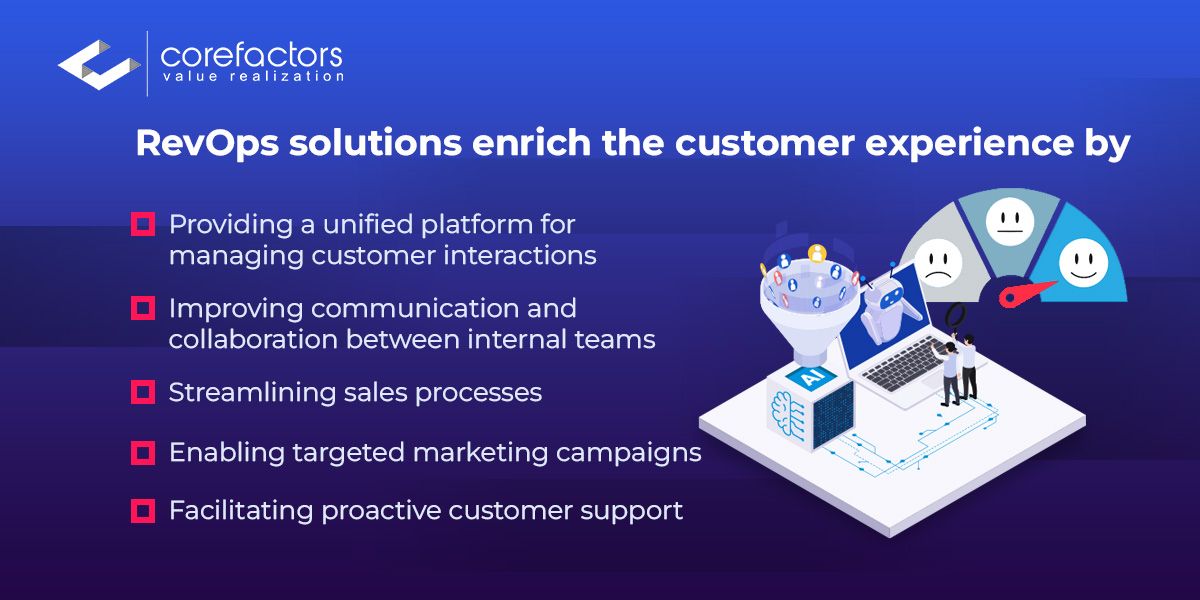
5. Cross-Functional Alignment
RevOps solutions define long-term business objectives that are shared across departments. For example, a common objective could be to increase annual recurring revenue (ARR) by a certain percentage within a specific timeframe.
By aligning the sales, marketing, customer support, and success teams. RevOps solutions encourage open communication among these teams. Improved communication leads to smoother collaboration and fewer misunderstandings. This strategy ensures a unified approach to revenue generation.

Collaboration is key to success in any organization. With alignment, resources such as time, money, and manpower are allocated more efficiently. Instead of working at cross-purposes, teams collaborate to achieve shared goals, reducing duplication of efforts and wastage of resources.
The Impact of RevOps on Your SaaS Tech Stack
RevOps helps you cut through the fluff in your SaaS tech stack. You do not need 30 different tools to run your sales and marketing efforts. It is a blatant misuse of resource allocation. A good RevOps solution helps you optimize your SaaS tech stack and take a minimalist approach to achieve maximum output.
RevOps enables you to choose technology solutions that can easily integrate with existing systems, accommodate changing requirements, and scale alongside the business. They often include advanced analytics and reporting capabilities that provide deeper insights into the performance of your SaaS tech stack.
RevOps solutions for SaaS come with real-time dashboards, customizable reports, and predictive analytics tools that enable organizations to track key metrics, monitor trends, and forecast revenue more accurately.
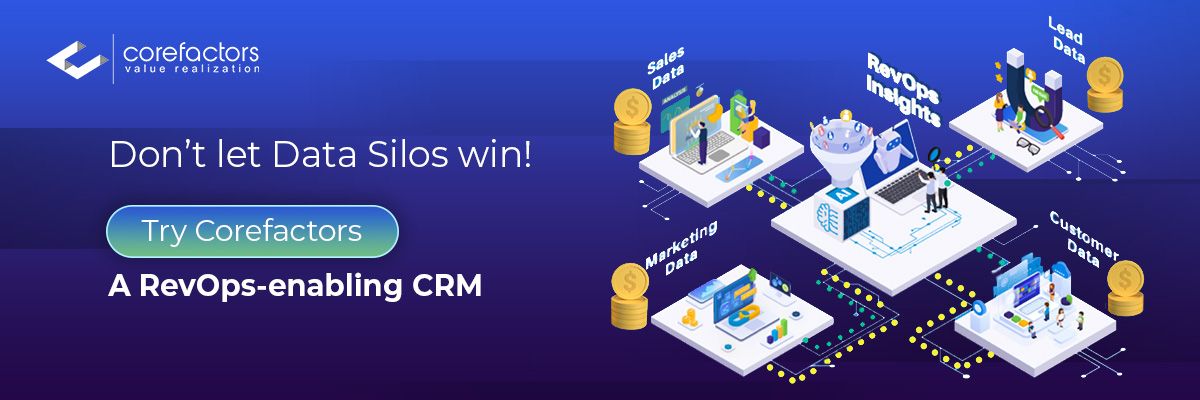
FAQs
What is RevOps?
RevOps or Revenue Operations is a strategy that addresses data and departmental silos by aligning all revenue-generating teams in an organization.
What is a SaaS company?
These are companies that provide Software as a Service (SaaS). Their service involves providing customers with applications over the Internet.
How does RevOps help SaaS companies?
RevOps solutions help SaaS companies by providing a centralized data management system, improving the sales cycle, enriching the customer experience, achieving cross-functional alignment, and scaling the business.
How do data silos affect SaaS companies?
Data silos are detrimental as they cause limited data accessibility, incomplete customer insights, inaccurate reporting and analysis, wasted time and efforts, and risk of data security breaches among other reasons.

